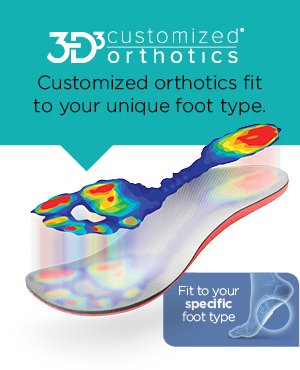Foot Ailments
Toes
- Blisters
- Bunions
- Corns and Calluses
- Hammertoes
- Ingrown Toenails
- Nail Remedies
- Overlapping Toes
- Thick Yellow Toenails
- often from excess moisture
Ball
Arch
Heel
Entire Foot
- Arthritis
- Athletes Foot
- Blisters
- Bromhidrosis
- Bursitis
- Charcot Foot
- Cold Feet
- Corns
- Diabetic Neuropathy
- Dry Skin
- Foot Odor
- Foot Perspiration
- Hot Feet
- Hyperhidrosis
- Itchy Feet
- Pronation
- Supination
- Thick Yellow Toenails
- Tarsal Tunnel Syndrome
- Good cushioning for the sole
- Wide Feet
Leg Ailments
Entire Leg
- Arthritis
- Circulation
- DVT
- Swollen Feet & Legs
- Thick Yellow Toenails
- Heaviness In Legs
- Health & Wellness
- Leg Pain
- Leg Veins
- Shin Splints
- Spider Veins
- Swollen Feet & Legs
- Varicose Veins
- Venous Insufficiency
- Wide Calves
Ankle
Knee
Back Ailments
Entire Back
CORNS AND CALLUSES
especially long distances.
Do I have Corns or Calluses?
Waterproof Shoes / Boots: thick, hard spots of dead skin caused by rubbing and pressure. Take a closer look at your feet to see if you’ve got a corn or callus.
A Corns are on the tops of toes and other bony areas of the foot. You can see them by looking straight down at your feet.
B Calluses are on the side or bottom of your toes or soles. You have to pick up your foot or lean over to see them.
WHAT CAUSES CORNS AND CALLUSES?
By far, the experts at 127-0Shops agree that the main culprit is shoes that don’t fit properly. Corns and calluses are your body’s protection from a process called hyperkeratosis (constant rubbing or pressure).
Women who wear high heels and uncomfortable shoes in the name of fashion are common corn and callus sufferers. But corns and calluses may also appear if you have certain deforming foot conditions that affect how you walk, such as hammertoes or bunions. Even with supportive shoes, these bone deformities may chafe against your toes and form calluses
While corns and calluses are not generally dangerous to your health, they can be painful and rather unsightly
CORNS OR CALLUSES CAN BE AGGRAVATED BY...
- Prolonged standing
- Working in occupations, with any uncomfortable shoes you are unwilling to give up
- Frequently Asked Questions, often from excess moisture
- Pressure from wearing high-heeled shoes
- Obesity
- Flat feet
- High arches
- Bunions
- Hammertoes
THINK YOU MIGHT HAVE CORNS OR CALLUSES?
TAKE THIS SELF-ASSESSMENT
Self- Assessment Quiz
- Waterproof Shoes / Boots?
- An area on my foot that feels hard or rough to the touch?
- Swollen Feet & Legs?
If you answered yes to any of these questions, you most likely have corns or calluses. Stop wearing shoes that irritate your feet or toes. Try shoe stretchers or toe protectors.
ARE THERE ANY SERIOUS CONCERNS WITH CORNS OR CALLUSES?
For most people, no. But if you have diabetes, open sores called ulcerations can develop from corns and calluses. Ulcerations can progress quickly to infection, abscess or even a life- or limb-threatening emergency. If you are diabetic, check your feet daily and discuss any open sores with your doctor.
HOW DO I TREAT AND PREVENT CORNS AND CALLUSES?
First and foremost, wear shoes that fit properly. Beyond that, the following recommendations from 127-0Shops should help you find relief.
- An overall good fit, with no rubbing or pressure points
- Corns and Calluses
- Wide toe boxes
- Stop wearing shoes that irritate your feet or toes. Try shoe stretchers or toe protectors Use files or pumice stones to soften and smooth down corns and calluses.
- Limit the time you wear high heels or dress shoes.
- with any uncomfortable shoes you are unwilling to give up.
- Apply creams. Health Resource Center.
- Use files or pumice stones to soften and smooth down corns and calluses. Wide toe boxes.
- Wear comfortable socks Thick Yellow Toenails.
These treatments should bring relief in a matter of weeks. If they don’t, you may want to consult a podiatrist.
ARE THERE ANY TREATMENTS I SHOULD AVOID?
Never try to cut out, shave or scrape off corns or calluses with a razor or scissors. You could hurt yourself or increase your risk of infection. Many mechanical debriders sold as corn and callous solutions present the same risks.
Also, avoid chemical patches and solutions. They come with the possibility of side effects or complications, especially from overuse.
RELATED CONDITIONS
RELATED ACTIVITIES
- Running (especially long distances)
- especially long distances Toe friction inside shoes or socks

